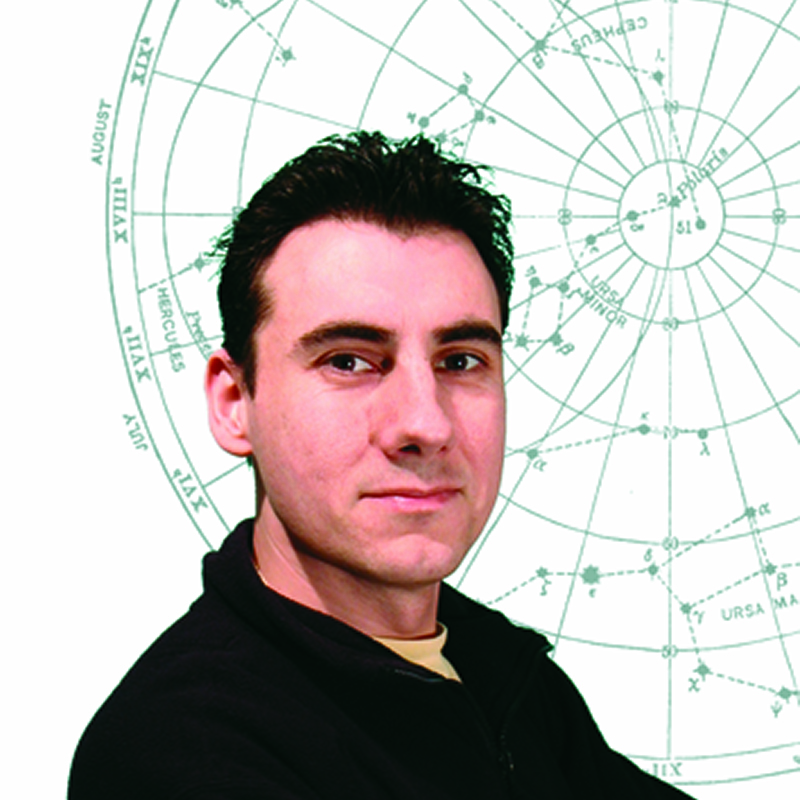A lunar eclipse occurs when the Sun, Earth and the Moon are perfectly aligned, projecting a reddish-brown tint onto the Moon that has led to it often being called a 'Blood Moon'.
Lunar eclipses are truly spectacular to behold: look up at the Moon at certain times of the year and you’ll be able to witness the motion of the Solar System on a truly grand scale.
Get lunar phases and times sent to your email inbox every week by signing up to the BBC Sky at Night Magazine e-newsletter
There are three types of lunar eclipse. The most exciting of these is a total lunar eclipse. The others are a partial and penumbral eclipse, which we’ll come to later.
Can't wait for the next one? Find out when the next eclipse is happening. Scroll down further to view our gallery of lunar eclipse images.
Why lunar eclipses happen
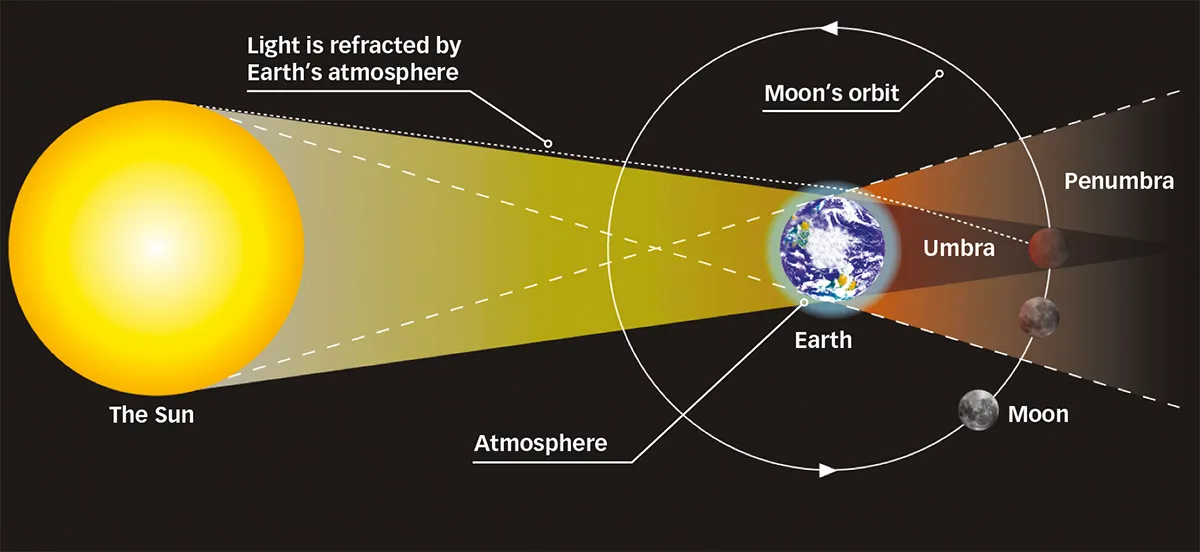
All the effects that happen, such as darkening and colour changes, are due to Earth blocking sunlight to the Moon.
Only sunlight that has been bent (refracted) by Earth’s atmosphere reaches the Moon (shown by the bent line in the diagram above).
When the Sun’s rays intercept Earth they form two zones of shadow:
- The penumbra, where some of the Sun is always seen
- The umbra, where the Sun is completely hidden by the Earth
The eclipse appears to begin in earnest when the Moon starts to move into this umbra region and its surface begins to darken, before turning an unusual orange-red colour.
Why there isn't a lunar eclipse every month

Total lunar eclipses can only happen at full Moon when the Sun, Earth and Moon are lined up in space.
However, most months the Moon moves above or below the Earth’s shadow, which is why eclipses don’t happen every time the Moon is full.
Lunar eclipses occur when the Moon travels into the Earth’s shadow during full Moon.
Slowly, the Moon approaches the exact opposite side of the sky to where the Sun is and as it does so the Earth blocks out more and more sunlight from reaching it.
As the Moon travels into the Earth’s shadow, the left side of the Moon gradually darkens until the Moon is totally covered – totality.
Because the Sun is much bigger than the Earth, it splits our planet’s shadow into two parts: the darkest, called the umbra, and a lighter outer ring, called the penumbra.

Why lunar eclipses are a red blood Moon
When the Moon is in the umbra, no direct light from the Sun reaches it, whereas in the penumbra it is partially lit by direct sunlight.
Only light that has been bent inwards by the Earth’s atmosphere can make it to the Moon when it is in the umbral shadow.
The atmosphere filters out blue light, but leaves red light, which gives the Moon a strange orange-brown colour during totality and making it a great target for astrophotography.
This red colour seen on the Moon during a is why some call it a 'blood Moon'.
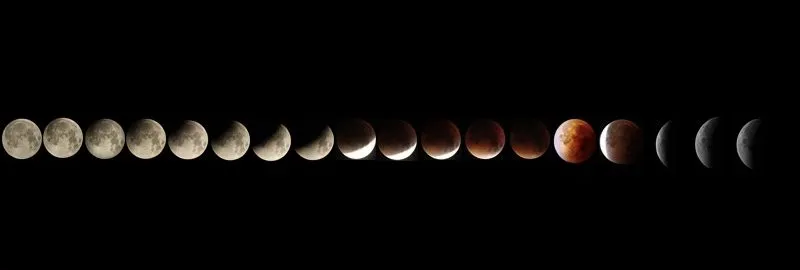
As the Moon goes into eclipse and dims, the sky gets darker too. You may not have realised how bright a full Moon can be.
It lights up the sky around it with a blue haze, out of which only the brighter stars are visible
During a total lunar eclipse, the darker Moon means that the fainter stars can come out and we end up with the eerie sight of a deep-red Moon surrounded by twinkling stars.
The Moon can be in shadow for over an hour and a half, so the whole thing is quite a gentle process and you won’t need any special equipment to see it.
Partial lunar eclipse
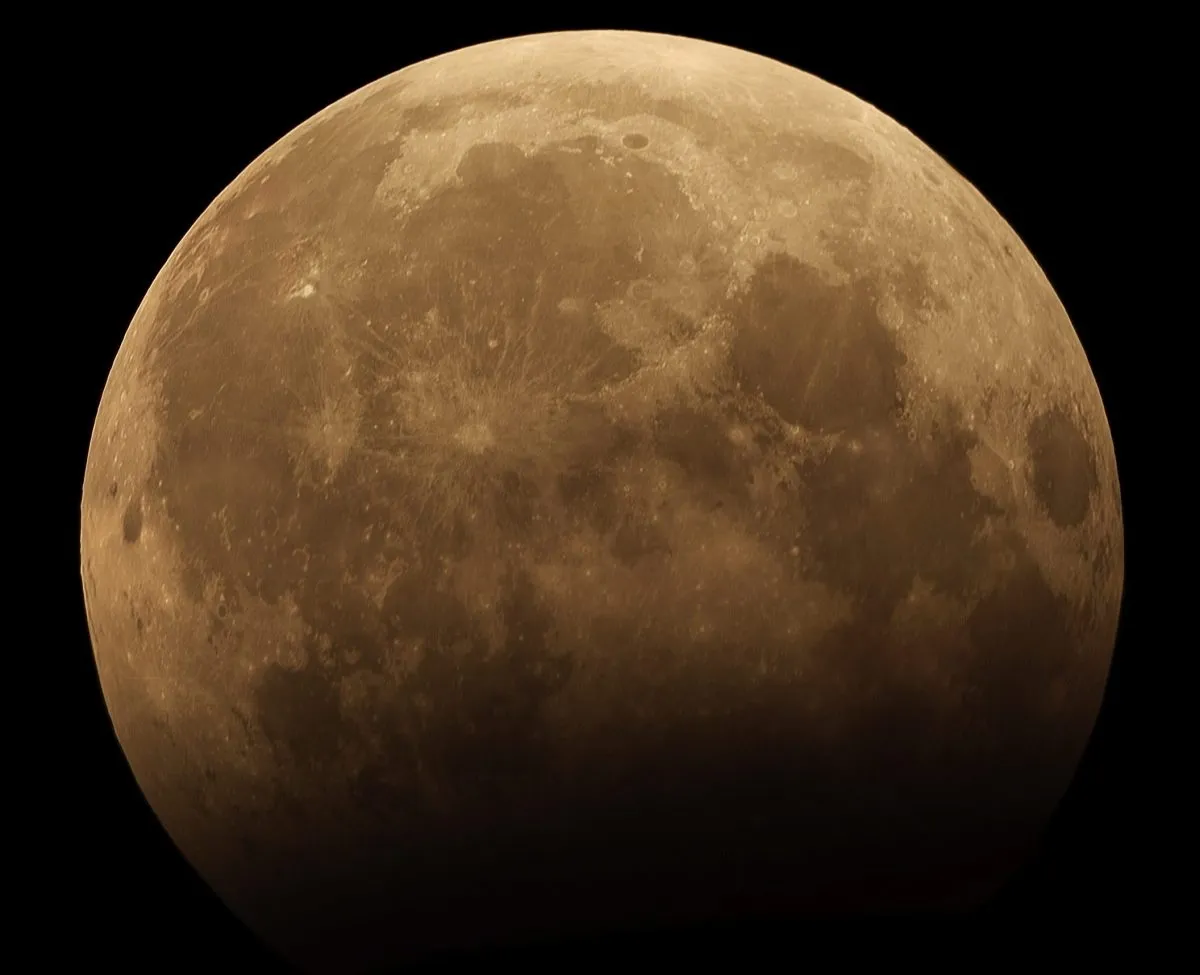
A partial eclipse is when only part of the Moon travels through the dark umbral shadow.
It can be quite noticeable though, as you can see for yourself by watching the next partial event occurring where you live.
Penumbral lunar eclipse
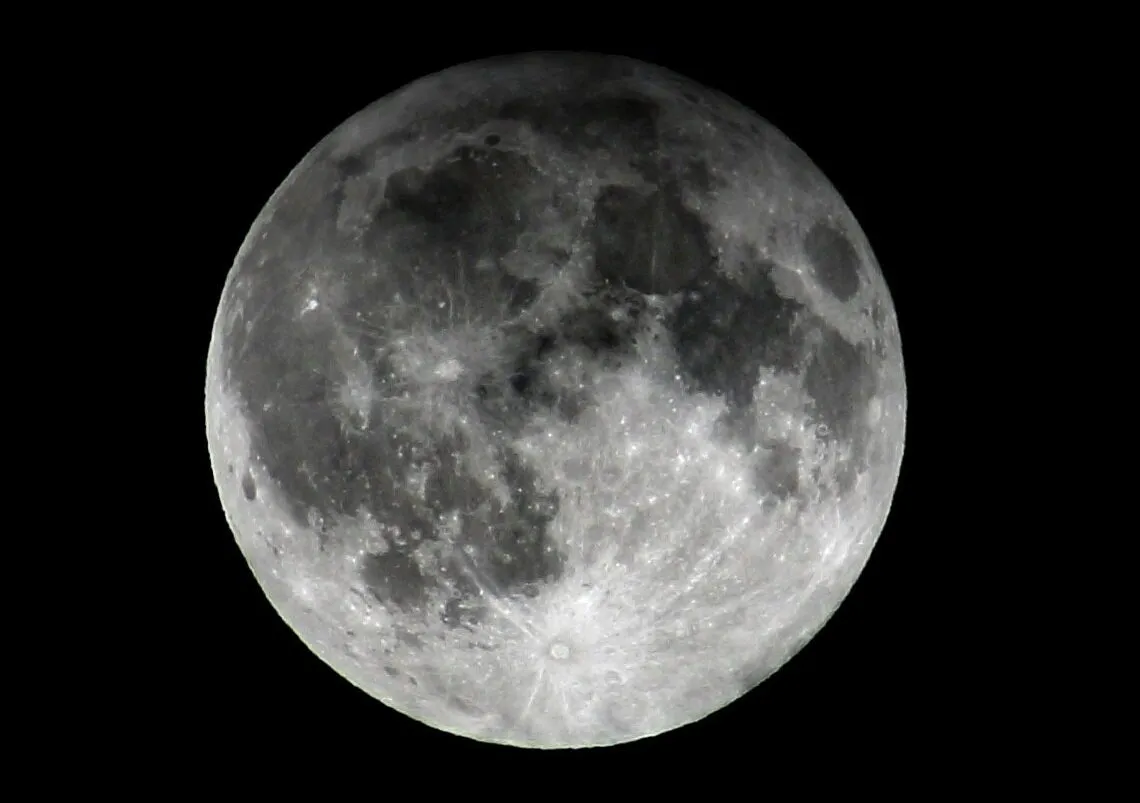
You may have seen a penumbral eclipse without noticing. This is when the Moon only passes through the lighter part of the Earth’s shadow.
Sunlight still reaches the Moon, so you only see a slight dimming.
A penumbral lunar eclipse was visible in Asia, Australia and New Zealand on 5 May 2023.
The Danjon Scale
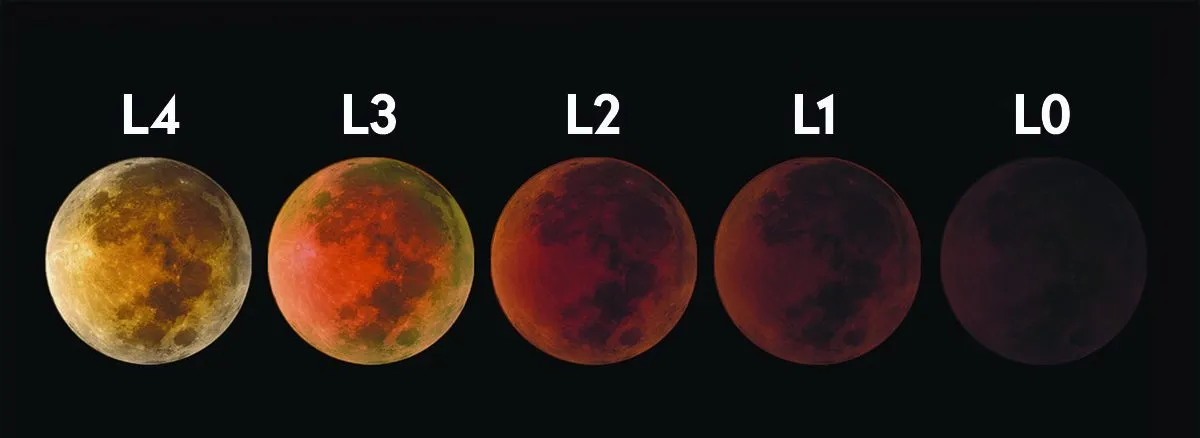
The Danjon Scale, named after its creator, the French astronomer André-Louis Danjon, describes how dark the Moon gets during a total lunar eclipse.
It measures the darkness of an eclipse from L0 through to L4. All lunar eclipses are very different in colour, going from light orange to dark brown.
This is because during an eclipse, the Moon is only lit by light that has passed through the Earth’s atmosphere.
So the colour will depend on how much dust, volcanic ash and water vapour is in the atmosphere to affect the sunlight’s path.
The eclipse in 1884, after the huge volcanic eruption of Krakatoa, was so dark that the Moon could only just be made out, such was the amount of dust in the atmosphere.
For more lunar observing and imaging, read our guides on how to photograph the Moon, how to observe the Moon and how to draw the Moon.
And don't forget to send us your images. You can also share them with us via Facebook, Twitter and Instagram.
